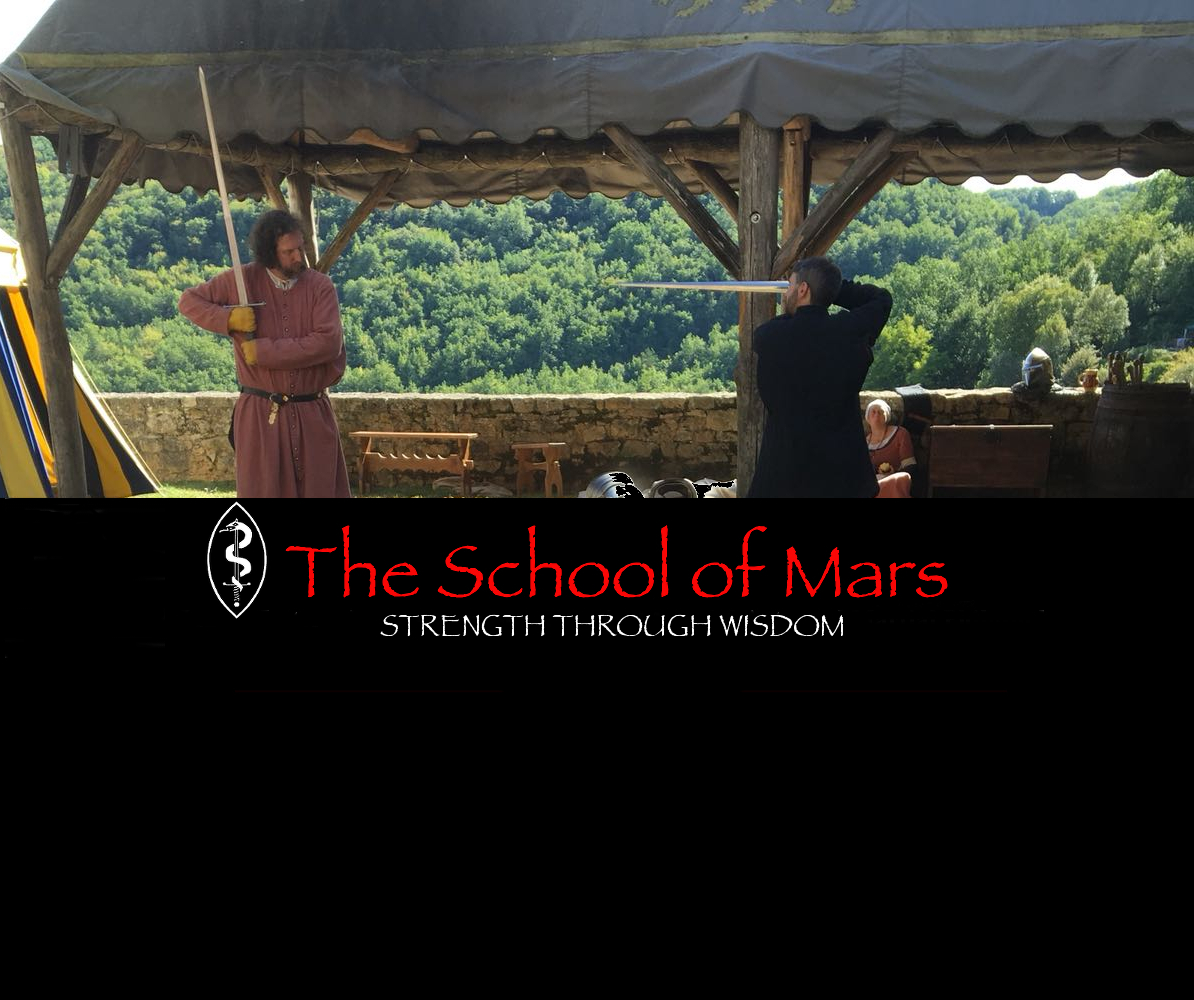Prior to my career studying early arms and fencing, I had spent years writing and performing stage fights for plays and several Renaissance festivals throughout New England. Gradually, I met more and more people who were involved with the more historical side of things, and found my way into that world. But teaching and performing stage combat remains a passion for me.
Generally speaking, a stage fight will never be the same as a real fight (by which I mean one where you’re actually trying to hit the other person, rather than just pretending to). They tend to involve, and need, very different things. A stage fight must be entertaining and engaging for the audience, reasonably easy to follow, be safe for all participants, and somehow contribute to furthering the story that’s being told. A real fight is under no obligation to be any of these, and frequently is none of them.
Over the years, however, I have had some luck combining the two in productions with good effect. I shall tell you now of my favourite case.
I was once involved in a production of Romeo and Juliet in York (for all my sins, both as fight choreographer and as Romeo). The concept for the production set the play somewhat further in the past than Shakespeare sets it, in the earlier part of the 15th century. The director told me that, since great care was going into ensuring that other aspects of the play, such as the costumes and music, were historically accurate, she wanted the fights to be period as well. At first I was hesitant, and explained to her what I outlined above. ‘What you’re asking for’, I said, ‘are fights that are quick, messy, and likely a bit more brutal than your typical R&J.’
Her response? ‘Great! Let’s do it!’
I’ve always tried to pepper my choreography with historical techniques to make it look a little different from the standard catalogue of moves taught by many training bodies for fight directors. But this was the first time I’d been asked to write fights that were as accurate as possible. I wasn’t sure how it would turn out and, more importantly, how the audience would feel about it. But I had my orders, so I set to work.
The result was better than I could have hoped. The two biggest fights (Mercutio v Tybalt and Tybalt v Romeo) were fought with swords and bucklers. Tybalt caught Mercutio in a I.33 style shield strike, and after being broken up by Romeo, Mercutio’s fateful thrust to his armpit was delivered at the half-sword when things got close and Tybalt cast aside his buckler. Romeo brought Tybalt to the ground with a false edge ascending cut to the back of the leg, planted his knees on Tybalt’s chest, drew his dagger, and drove it through Tybalt’s eye.
Each fight lasted no more than five seconds.
The audience was stunned. They had been prepared for extended Errol Flynn-style swashbuckling as is common in so many productions. What they got was a few seconds of blurred motion and awfulness. But it had exactly the effect the director had wished for. Up until that point, the play was rather light-hearted. But after that scene, the audience got the message loud and clear that things had gotten dark very quickly. The jarring brevity of the fights really drove home to them the senseless violence that, when you stop and think about it, actually takes place in the play. The production was very well received all around, and I breathed a sigh of relief that I hadn’t tainted a classic.
This obviously wouldn’t work for every performance which features a fight. In this instance, with the goals of the director, it played a substantial part in promoting the desired atmosphere. But where this sort of thing wouldn’t necessarily be fitting, it’s still worth thinking about adding a flavour of historicity into fights where you can. Not only will they look a little different than what the audience is used to, but it also engages in a bit of subtle diplomacy for European Martial arts, with a bit of myth busting thrown in for good measure as well.
